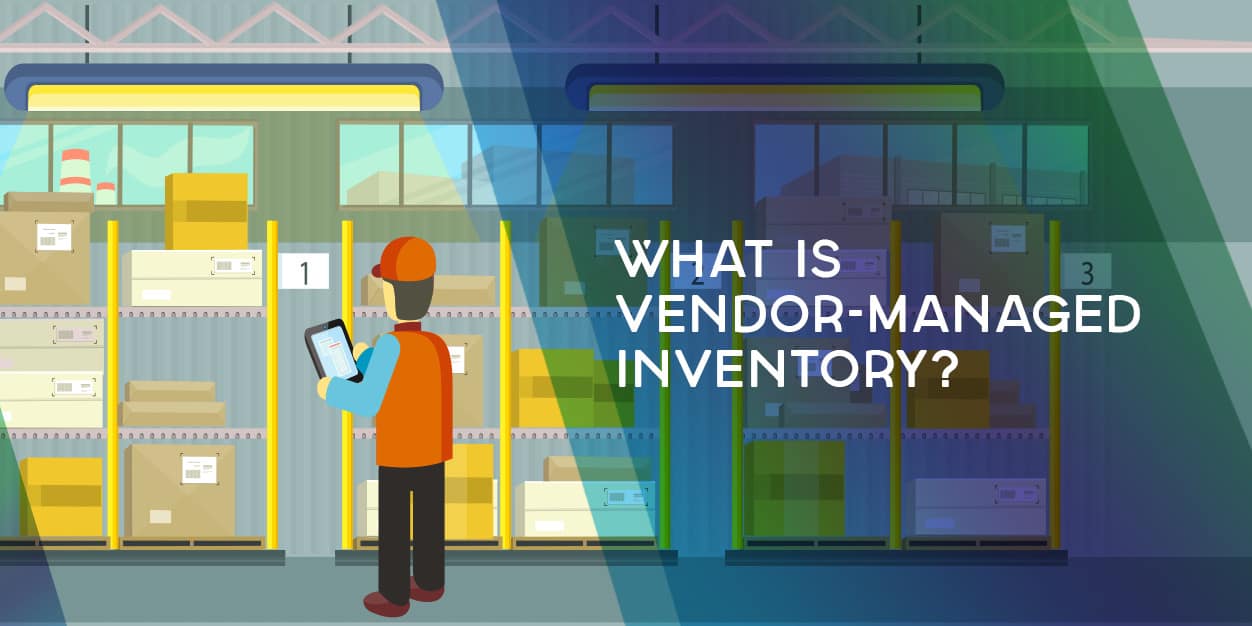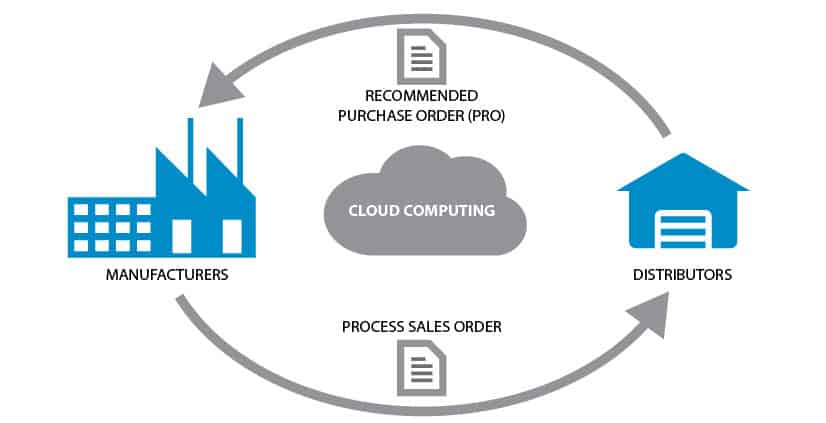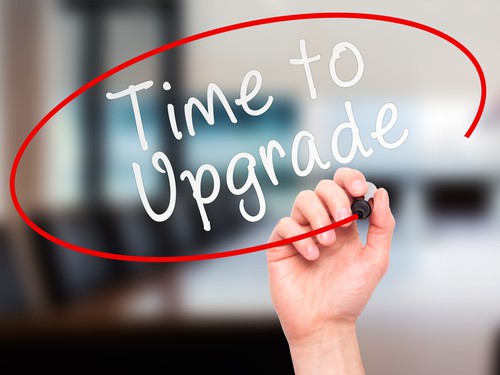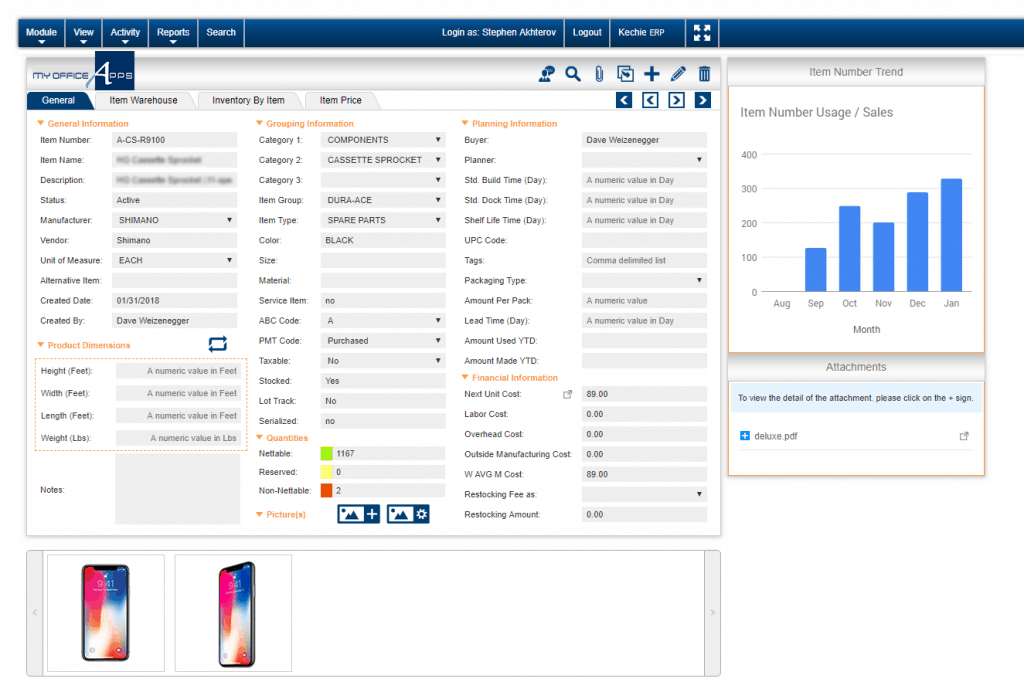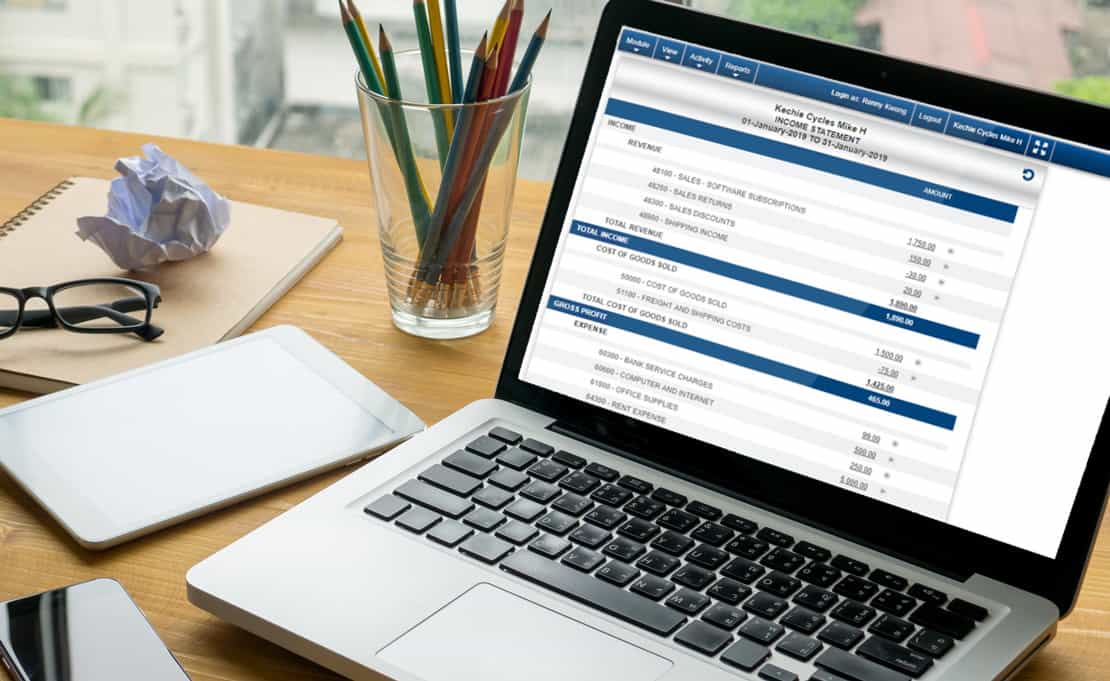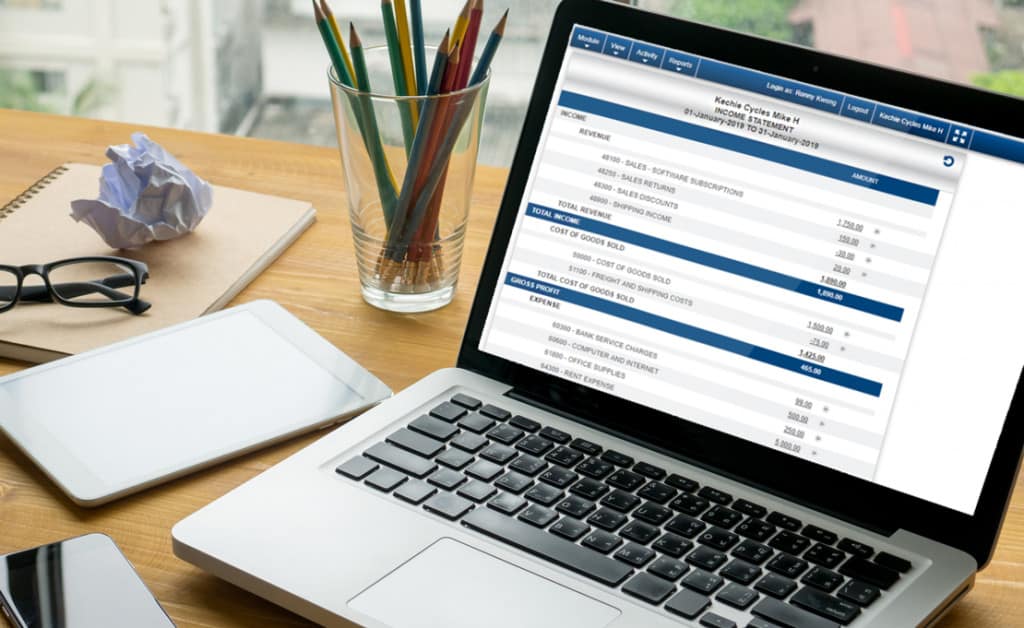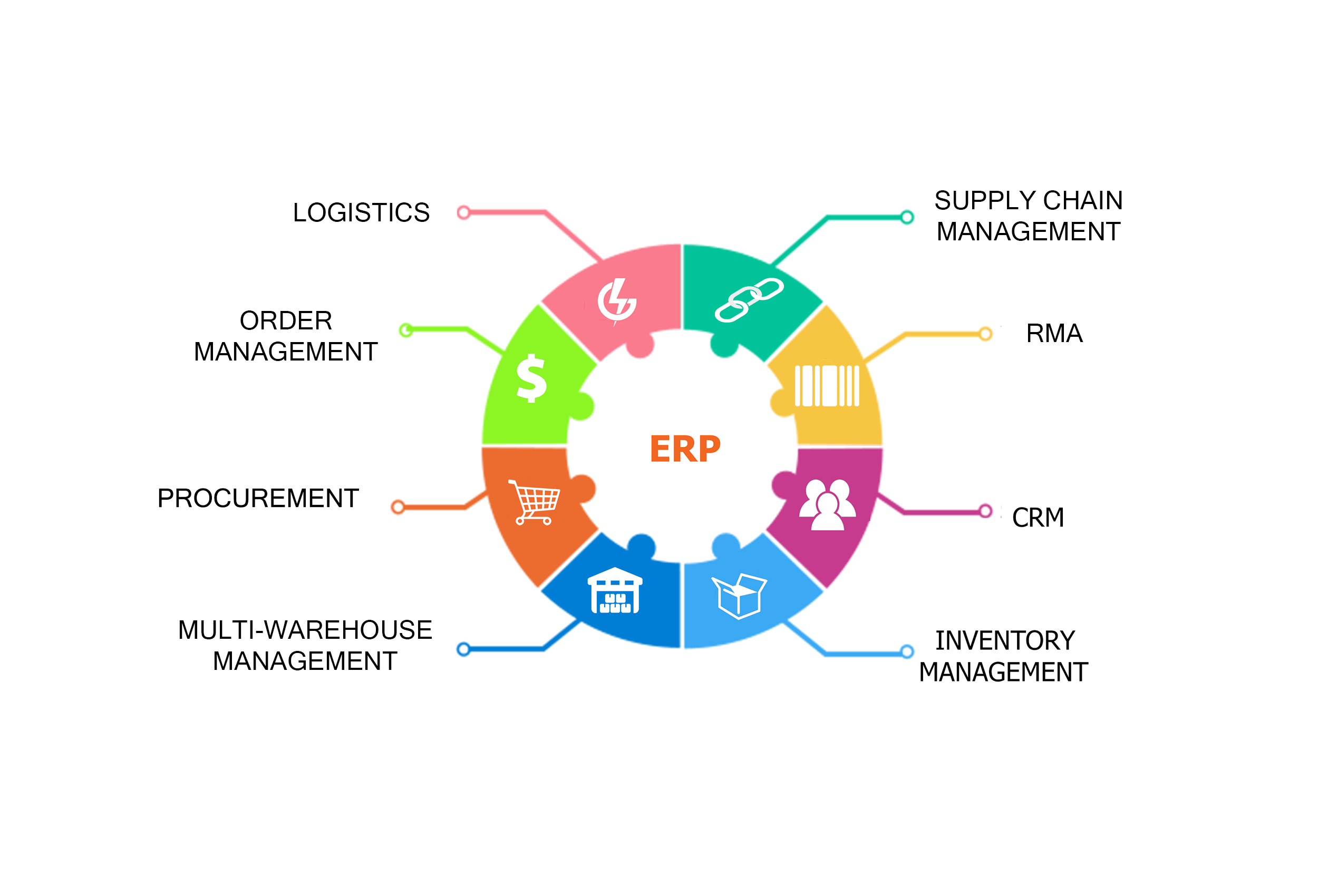Medical Inventory Management & Consumable Inventory
Consumable Inventory & the Medical Field
Despite the medical industry operating as a regular for-profit business, they rarely work as such. Medical professionals are bound by their oaths to help their patients no matter what. This focus on patient care pulls them away from managing their business like a businessperson. Unorganized medical inventory management can cause delays in providing patient care, and in the healthcare industry, each second matters. Medical providers often overlook inventory management, especially consumable inventory. Changing regulations, patient relations, labor shortages, and fluctuating supply costs understandably take precedent. A medical inventory management system can be intimidating and overwhelming to the average doctor, nurse, or other medical professionals. After all, configuring and monitoring an advanced business management system is not what they're trained to do.
There is a persistent notion that business owners of all kinds are saving time and money by not learning new software. They have convinced themselves that the time necessary and commitment to learning a medical or hospital inventory management system will derail patient care and take attention away from other operational concerns. This thinking causes difficulties in increasing the number of inventory items proportionately.
What's more, the type of inventory a medical business or hospital has is far from the standard business model. Medical service businesses have stock tightly regulated by many government agencies, on top of perishable, condition-specific, and consumable inventory that all require special consideration. The need for inventory management software is not something that can be ignored forever. Eventually, it will be too much to track.
Medical Inventory Management & Consumable Inventory
Medical inventory management software (IMS) needs a higher level of functionality to help manage the different kinds of inventory. The most sophisticated IMS has "consumable inventory" as a feature. This feature is vital because consumable inventory is a special kind of inventory, how it is used, and how it affects a business.
What is consumable medical inventory? According to Clinicaloncology.com "Consumables include gloves, gowns, masks, syringes, needles, sutures, staples, IV tubing, catheters, and adhesives for wound dressing, in addition to other tools needed by doctors and nurses to provide care." Consumable inventory's unique nature is that there is no reusing it once used or consumed. One and done, as some would say. That is the critical difference between consumable inventory and all other forms of inventory.
Because of the temporary nature of consumable inventory, it can become a large portion of the overall budget. Not just in the amount purchased, but the operational costs associated with consuming a said item. Thanks to the COVID pandemic, new requirements for personal protective equipment have made consumable inventory an even more significant chunk of the operations budget.
Getting a Handle on Consumable Inventory
Understanding and controlling consumable inventory offers a host of benefits:
- Companies can see what items get used the most, when and how it is used, and who uses it by tracking usage rates and trends.
- By monitoring both high and low inventory levels, companies can make informed purchase decisions.
- With a firm understanding of the supply chain, purchases and deliveries become quickly automated.
- Aids in financial management as consumable inventory can be a considerable drain on revenue streams.
Ultimately medical inventory management software is required to tame the beast of consumable inventory. The amount of variables, items, and consistent calculations is too much for pad and pen. The selection process is often overwhelming with a litany of inventory management, supply chain management, warehouse management, and enterprise resource planning (ERP) software out there. Knowing what to look for in software and selecting becomes easier when you understand what to identify.
Medical Inventory Management vs. Enterprise Resource Planning System
Your medical inventory management software should do more for your business than provide inventory levels. Often inventory management systems are just that, used for managing inventory. Other software incorporates inventory management into their overall functionality, known as enterprise resource planning (ERP) systems. Medical ERP systems operate the same way typical ERP systems do with increased functionality to meet the medical industry's demands.
Medical ERP systems can communicate with other modules that oversee accounting, finance, procurement, and other parts of the business to help provide critical data necessary to get a complete understanding of the state of the company. The network of modules communicating with one another is what we call a fully integrated ERP system capable of managing all business operations. Be warned. Many ERP systems cannot distinguish, let alone count, consumable inventory separately from regular stock. Having a robust inventory management module within an ERP system empowers medical business owners to spend less time gathering data and more time helping their patients.
Automation and Reporting
Other significant features to look for in a system are automation and reporting tools. Automation will enable businesses to have repetitive and mundane tasks such as placing monthly purchase orders, notifying patients of upcoming appointments, and receiving scheduled deliveries. Reports generate data, data is king in the business world, and the medical industry is no different. In this case, less about getting ahead of the competition and more about understanding how the business operates. As any hospital administrator will tell you, knowing how money flows within a facility is just as crucial as obtaining the funds.
The Kechie Difference
Medical inventory management systems are suitable for small businesses with no expansion plans. But, a fully integrated ERP system is the best answer for businesses that need advanced solutions. My Office Apps are the creators of Kechie ERP, a cloud-based, fully integrated solution configurable to the medical industry's needs.
The features discussed above are all present in Kechie out of the box, allowing medical businesses to:
- Monitor and control all inventory types, with advanced consumption functionality
- Streamline their supply chain
- Automate tasks
- Provide comprehensive reports from the hundreds available
- Improve overall efficiency and quality of the business operations
My Office Apps is a company of dedicated professionals who use their expertise to make the process of implementing an ERP as painless and straightforward as possible. Contact us today to learn more about My Office Apps solutions for the medical industry, or schedule a demo to see first-hand what we can do for you and your business.
How to Improve Inventory Management in Shopify
Why Your Shopify Store Needs an Inventory Management Solution
The COVID Pandemic and eCommerce Growth
2020 was many things, not the least of which the United Nations Conference on Trade and Development called a "turning point" in eCommerce. Across the world, the effects of the eCommerce boom were felt. In the United States, we saw an eCommerce growth rate of a staggering 44% increase from 2019. This growth generated approximately $861.12 billion in online sales. For businesses equipped to handle a large sales influx, there was nothing to be concerned over. Still, for companies working with a patchwork of software or working exclusively with the tools provided by their platform, such as Shopify Inventory, the results can be less advantageous. Experts agree that proper inventory management systems are a critical factor for eCommerce businesses to be successful.
What is an Inventory Management System?
An inventory management system (IMS) is a piece of software that can provide for your company's technological needs while managing all aspects of your inventory. When selecting an inventory management system, growing eCommerce businesses need only ask themselves a few essential questions:
- Scalability: Is the software capable of growing with your store?
- Ease of use: Do you understand all the functions of your inventory management system?
- Reliability: Can you access the system in a way that makes sense to you?
- Technology: Is the system capable of handling the tasks you need it to? Such as reporting, dynamically updated data, and more.
The Dangers of Not Using an IMS
For the many businesses that have found success on Shopify, the need for inventory management grows as their business does. It's easy to see a dropshipping site as easy to manage, but managing inventory can be tricky. If your Shopify store is growing too fast, then monitoring inventory levels, tracking sales, managing vendors, and other tasks will become overwhelming. There is a constant threat of mistakes and errors when not tracking inventory properly. However, an IMS has many significant benefits:
- An IMS can plan and prepare for sudden sales spikes or drops by monitoring trends and referring to historical records.
- Provide increased sales productivity and improve delivery times, allowing your business to give customers a more accurate picture of their deliveries.
- By streamlining operations, you can focus on the more critical functions within the business.
Why Shopify Inventory Management Won't Be Enough
Two factors of an inventory management system can cause significant headaches for eCommerce owners. While it is a top-notch eCommerce platform, Shopify won't
- Automate your ordering and shipping processes
- Help to manage your product variants
Shopify can help with basic eCommerce needs but ultimately relies on third-party developers to offer unique solutions for their users.
For example, business owners should also consider accounting software and Customer Relationship Management (CRM) software to care for and cater to their customers adequately. Shopify does not provide these out of the box. Instead, they have a marketplace with applications and extensions designed to add increased functionality to the platform. This lack of out-of-the-box functionality presents unique challenges for owners who need multiple applications. As you add more applications to manage multiple locations, handle return merchandise authorizations (RMA), and generate financial management reports, the more challenging it becomes. By integrating, synchronizing, and consistently updating an unruly list of software and extensions, you are almost certainly setting yourself up for hardship, if not failure.
What Can Be Done?
Ideally, you would look for an all-in-one solution to help automate the inventory management system, compile various essential reports and improve your business operations overall. While still seamlessly connecting to your Shopify store.
The team at My Office Apps has developed a fully integrated, cloud-based ERP system for Shopify users built to handle all data in real time. The Kechie system is fully integrated with your Shopify store. This allows store owners to take orders from Shopify and update their Kechie system. Any changes made to Kechie will dynamically update the Shopify store. This ensures that Shopify owners are never working with incorrect data.
Additionally, Kechie ERP is an entirely scalable solution, meaning that as the shop grows, so does Kechie. My Office Apps understand that businesses need room to grow, so they've designed Kechie to allow for unlimited transactions of all kinds. Best of all, Kechie is cloud-based, users can access their database from any web browser, a perfect companion for Shopify's Mobile Shop Application. Kechie is more than just an inventory management system; it is a complete business improvement solution.
Contact us today to schedule a demo and see what Kechie ERP can do for your business.
The Difference Between Inventory Management & Inventory Control
Inventory Control and Inventory Management
Similar but ultimately different
Regardless of the industry that your business is in, one of the universal truths of operating a successful business is optimized inventory management and control of inventory. While the terms can seem alike initially, their few similarities become overshadowed by their core functions. This dichotomy isn’t a bad thing. Experts agree that proper inventory management involves inventory control methods; the two must work together to optimize their operations fully. This goal can only be accomplished through accurate inventory management to reap the full advantages of an inventory control system.
The Difference Between Inventory Management and Inventory Control
Let’s try an analogy first. Inventory management is responsible for the broad spectrum of tasks involved in restocking and regulating inventory. Similar to grocery shopping for your family. Ideally, you would purchase for a week or two at a time to not waste any food. While also consider your home’s needs and wants, like a company’s customer base generating supply and demand.
In contrast, you begin to plan meals and put the like items together in the freezer, pantry, and fridge. The process of creating meals and putting the food away is the same as inventory control. Ultimately, it all involves controlling the inventory on hand. At the same time, inventory management is the method of replenishing stock, forecasting supply and demand, along with a broad array of other tasks.
Inventory Control In Different Industries
One of the primary objectives of inventory control is to optimize the items already stocked. One of the advantages of an inventory control system is all about knowing what you have inside and out. Knowing inventory levels, locations, what condition things are in, and much more. All these factors can significantly affect the way manufacturing and distribution companies, in particular, operate.
For example, small to medium businesses can have multiple tiers of inventory such as consumable items like toilet paper and copy paper, raw materials like metal and wood, finished food sale items, and potentially many other forms of inventory based on the business. Distribution companies sometimes use unique categorization for inventory items based on size, color, expiration date, and other factors. Knowing how to group inventory based on different departments’ data gives businesses the edge in this fast-paced, next-day delivery world.
These methods are not exclusive to manufacturers and distributors. Similarly, nonprofit and food-based businesses utilize inventory control methods but with added conditions and parameters. Nonprofit companies are required by law to document nearly every action taken by their business, especially when it comes to their accounting and financing. Providing accurate financial reports for a nonprofit can be a huge hassle. When a nonprofit uses apt control methods, tracking stock and other assets helps optimize the allocation of its limited funding. Additionally, food-based businesses like restaurants and food distribution companies that operate seasonal inventory use different inventory methods for various cost-saving measures. Inventory control, when executed correctly, can provide crucial insight into supply chains and inform every department in a business.
Advantages of Inventory Control System
There’s no doubt that successful businesses employ proper inventory management, but can you accomplish that without a suitable inventory control system? After all, inventory control is all about optimizing the inventory you have in stock. Can you expect your inventory to work for you if you aren’t in control of it? To use another food analogy, in professional kitchens, they use a concept called mise en place, which translates to “everything in its place.” In inventory management, mise en place is inventory control, making sure the inventory is in its place.
Sadly, this is not always the case. Experts have estimated that approximately 43 percent of small businesses don’t track their inventory at all. As a result, they are missing out, to say the least, missing out on potential profit, minimizing waste, and increased customer satisfaction. How does inventory control accomplish those? By integrating with inventory management software. They are two sides of the same coin and genuinely complete one another. By using even simple common sense inventory management and control methods such as FIFO (first-in, first-out) and LIFO (last-in, first-out), businesses of all kinds can operate with total efficiency.
What To Look For
While it can be overwhelming, there are some features that you want to look at regardless of the industry. Those include:
- Automated Tasks: Thanks to modern advances in AI technology, automating various inventory tasks has never been more straightforward. The key to efficiency is ensuring that time-consuming or tedious activities are automating their execution.
- Comprehensive Reports: Inventory management and control work in tandem. Having a robust array of reports will inform you of when things are out of sync and provide a better understanding of day-to-day operations.
- Regular Auditing: By running periodic inventory audits, businesses can identify issues before they become problems.
- Advanced Tracking: Software should aid a business in tracking their products by any categorization they need, by site, location, serial number, lot, date, and more.
- Other Features: These should be based on your industry and include multiple location management, serialization, handheld scanner connectivity, and different software integrations.
Experience the Kechie Difference
At the very heart of the Kechie ERP is the Inventory Management module. A robust piece of software that manages not only the most complex and unruly warehouses but comes fully integrated with other modules to become an overall business improvement system. Kechie is cloud-based, allowing businesses to manage and control inventory from any web browser-enabled device. The team of experts at My Office Apps strives to ensure the success of all our users. Contact us today to schedule a demo and see how we can help improve your business today.
Inventory Management Software and the Cannabis Industry
Inventory Management Software and the Cannabis Industry
Cannabis Industry in America
The legality of the cannabis industry is of no small debate in this country. Seventeen states, the District of Columbia, the Northern Mariana Islands, and Guam have legalized recreational cannabis, another 16 have decriminalized its use, and 33 states have some form of medical use. There are plans for federal legalization under the Biden administration, and even late last year, the United Nations, which are famously anti-cannabis, reclassified cannabis. Hence, it no longer shares the highest classification of narcotic drugs. Across the country, legalization efforts are underway by grassroots organizations and local organizers.
Where there is no debate of cannabis's potential is big business. According to CNBC, "the U.S. market opportunity is valued at around $40 billion to $50 billion and expected to grow to $80 billion by 2030 assuming national availability." That's more than double the entire global music industry's value.
Accounting for the Cannabis Industry
Because of the federal status of the cannabis industry, we see multi-million dollar companies conduct transactions almost entirely with cash. Why is that? Because significant credit card companies are unwilling to work with American cannabis companies to process credit and debit cards most of the time. Except for a few more minor direct-to-bank account transaction apps, almost all expenses and company transactions are made with cash; even payroll and federal taxes are paid out entirely in cash.
Limited Specialized Technology
Among the legal problems for the cannabis industry, there is a lack of business tools available for the cannabis business owner. States are still struggling to enact compliance measures. Other software such as ERP, CRM, warehouse, and inventory management tailored to the cannabis industry do not exist the way they do for other businesses. This lack of technology has caused many business owners to pull up their bootstraps and do things a little more old-fashioned. Despite a few cannabis software suites to help cultivators organize their growth, there is no all-in-one solution for cannabis companies.
How Kechie ERP Can Help
When it comes to selecting the right ERP for a cannabis business, there are a few essential features to consider:
- Type and level of responsiveness with customer service
- The amount of configurable and customizable features
- Ease-of-use
- Real-time visibility in all transactions
- Traceability and accountability
- Fully Integrated Cloud-based solution
Fully Integrated Design
All individual modules such as inventory and warehouse management communicate with each other in real-time thanks to our proprietary, fully integrated cloud-based software.
For example, let's say that your head cultivator needs to purchase new seeds, check each greenhouse's inventory levels, and create sales order reports for the last six months. In Kechie, the cultivator can generate purchase orders with your seed vendors, which will allocate money from the designated account. To check the inventory levels, the cultivator won't have to contact anyone but check the Inventory module to get authentic inventory levels in one place. Finally, when generating the sales orders, the cultivator will have several options for creating the reports, by strain, sales type, location, and many more; by pulling data from all available modules to create original and customized reports. These are just three simple examples of the kind of complex business processes made easy with Kechie ERP.
Kechie ERP by My Office Apps also features a Finance module that hits all of those essential boxes, along with other modules. The accounting module features accounts receivable and accounts payable, automated modules designed to reduce human errors significantly. Combined with cash management and general ledger features, allow business owners to pay bills, create purchase and sales orders quickly, and take control of their finances. The accounting module allows business owners to organize their financial statements and track every step of their procurement and sales cycles. Kechie ERP is designed to offer the tools needed to monitor every transaction, with advanced reporting tools that are easily configurable, ensuring accountability for business owners' something lacking in the cannabis industry. The fully integrated system is perfect for cannabis businesses.
Contact Us for More Information
My Office Apps is a different kind of SaaS provider. We partner with cannabis businesses to improve their existing processes, not the other way around. Our software is configurable to your needs, we can customize integrations, and we are constantly working to improve with new features and modules. We offer 30-years of software experience and nearly a decade of cannabis industry experience at your disposal to make your business stand out by operating better by performing beyond your expectations.
Contact us by visiting www.myofficeapps.com to see more of what Kechie ERP has to offer the cannabis industry. Schedule a demo today by emailing us or by calling (714) 486-1487.
Win Big with ERP: AI Solutions to Influence Your Bottom Line
Win Big with ERP: Artificial Intelligence Solutions to influence Your Bottom Line
One of the hottest topics in IT today is Artificial Intelligence (AI). By continuing to automate certain functions using sophisticated AI algorithms, one can free up employee resources for more creative activities that will add further value for your business. Although some believe that AI may replace more mundane jobs, our belief is exactly the opposite. AI will help create an increased number of less-repetitive jobs in your organization making it more innovative, more responsive to your customer’s needs, and more successful. AI will also bring operational benefits with an ability to reduce errors and improve processing times for various transactions that will decrease costs and improve customer satisfaction.
AI incorporates the ability to find trends in a large collection of data and provide insights that may not be obvious to a person looking at gigabytes of data. Many AI programs incorporate the ability to learn from previous activities and allow one to develop more accurate forecasts and predictions.
AI technology can make a positive impact in multiple areas of your business. These can include:
- Inventory Management – By helping to provide more accurate forecasts — optimizing supply chains — figuring out the most efficient way to store the inventory — and tracking product lifecycles, various AI techniques can improve costs, decrease waste, and improve cycle times.
- Production Management – Figuring out the most optimal way to process your backlog in your manufacturing plant can become a horribly complex problem. Utilization of AI techniques can figure out the best ways to select what order to process the jobs in your backlog, which machines to use, maintenance scheduling, and overall logistics as the work-in-process moves through the manufacturing cycle. These optimizations can help decrease the amount of capital equipment needed, improve cycle times, and lower costs.
- Sales – One of the most profitable ways of improving your sales is to implement sophisticated upsells and cross-selling approaches. A sophisticated AI algorithm can help by analyzing, in real-time, what additional products to recommend based on previous customer history and other information.
- Financial Management – Besides automating various financial functions, an AI program can help a financial manager make various key decisions, such as how much cash to keep on hand, whether a capital investment will pay off, and double-check financial statements for accuracy.
- Marketing – A key marketing function is to develop the best and most effective message for your marketing campaign based upon a variety of factors. These include customer demographics, competitive challenges, historical performance, product attributes and many others. Analyzing these factors can involve looking at a great deal of data. By utilizing advanced analytics, a good AI program can help a marketing manager sift through all these factors and create the most effective marketing campaign.
As part of our mission to be a business process improvement company, My Office Apps, Inc. is committed to providing continued improvements and incorporate various advanced AI techniques in our Kechie™ ERP software. Our goal is to provide the best solutions for small and medium sized businesses with the latest techniques to contribute to the success of our customers. In the coming weeks, we will post additional articles that describe some of the specific AI features we have already incorporated into our Kechie software and also provide a roadmap for other features we expect to implement in the near future. Our focus is not to provide AI for AI’s sake, but rather to implement practical AI functions that can make a real difference to your bottom line. For more information, visit www.myofficeapps.com, or better yet, call us at (949) 486-1947 and we will schedule a demo so you can view these features for yourself.
5 Social Listening Strategies for Success in 2020
5 Social Listening Strategies for Success in 2020
In this age of technology, social listening is an essential skill for all top managers. Facebook, Twitter and Instagram are not just platforms for the young at heart. Businesses have recognized the value of social media and engage their customers and end-users through these resources regularly. In a recent study by Smart Insights, top managers confirmed that active engagement positively influenced revenue and sales. With the exponential growth of social media in all we do, social listening has become an essential tool in maintaining awareness and monitoring the reputation of any business.
Customer pain points can be picked up with social listening. This medium affords the ability to respond to questions, complaints, and comments. Listening closely in these cyber spaces can provide managers with customer perspective which could affect the success of your business. In addition to monitoring your business, social listening can help track competitors and benchmark yourself in the process.
Pure Moderation, an online social moderation company, recommends 5 social listening strategies for business success:
- Actively join social media discussions for better feedback than focus groups
- Understand growing social trends and news
- Identify your influencers to spread the word from a trusted third party
- Recognize the need for product development from honest feedback
- Know your competitors by actively listening to the conversation
Continued development of listening skills at all levels of management is very essential for business success. If communication inside and outside the organization is to be purposeful, we must listen to each other attentively. Social listening clearly plays a significant role for all managers. Engaging in the conversation socially will provide insights into the strength and weaknesses of your products, services and organization. Progressive organizations encourage the people within to learn and adopt active listening in all areas of business.
My Office Apps, Inc. (MOA) is the leader in business improvement software solutions to automate your organization. Building on three decades of software design and development, MOA delivers Kechie®, a transformative business tool. Kechie® is a fully integrated Enterprise Resource Planning Software as a Service (SaaS) with a simplified user experience and the latest in cloud technology. It is quick and easy to implement without the expensive price tag. Sold in separate modules – inventory management, ERP, finance, manufacturing – Kechie® is easily configured to the scalable needs of your growing business. For more information on managing your business end-to-end or streamlining business processes, visit www.myofficeapps.com.
What is Vendor Managed Inventory? How to Make VMI Work
What is Vendor Managed Inventory? How to Make VMI Work
Looking to streamline your supply chain and reduce inventory costs? You might want to look into Vendor-Managed Inventory (VMI). A VMI software might be the solution – as long as you know the best practices to make it work. So, what is VMI, and what is the impact on your business?
Vendor Managed Inventory is a business arrangement where the vendor of a product takes responsibility for making sure the buyer has the agreed inventory. The supplier or vendor ensures the stock is replenished automatically without the buyer’s initiation. If done right, VMI is a win-win situation for both the vendor and the customer.
What benefits can VMI bring to your business?
- VMI helps cut operating costs – With the supplier handling the quantity and frequency of orders, you can reduce costs associated with personnel and space.
- Lean inventory levels – VMI allows your vendors to supply in-demand goods at the right time. This also removes the need for safety stock.
- Improved Efficiency – The speed of stock replenishment is improved, and the risk of running out of stock is reduced. This improved service trickles down to the end-users.
What are the benefits of VMI for the Manufacturer/Supplier?
- Forecasting is easier courtesy of access to the buyer’s Point of Sale data.
- An optimized VMI program ensures you supply what is needed, and at the right time. Visibility to inventory levels helps the manufacturer ascertain the need for a product before it’s ordered.
- Produces a predictable and steady flow of income while mitigating the risk of losing the customer to a competitor.
- VMI reduces ordering errors and helps the supplier schedule operations productively
- A VMI program facilitates a stronger Customer-Supplier relationship. Both parties must work closely together to ensure seamless inventory management activities.
Cons of VMI
Regardless of the benefits highlighted above, enforcing a VMI program has a few drawbacks that business owners should keep in mind. One of the main disadvantages of VMI is its impact on sourcing. It’s difficult for supply chain managers to consider re-sourcing when the current VMI program is well-run. Some managers might be compelled to compromise supplier-related issues such as higher prices due to over-reliance on a vendor.
Granting non-employees full access to your inventory data is a significant risk. Leaving your stocking needs to the mercy of a 3rd party makes your business vulnerable to errors by the supplier, and even sabotage from competitors.
3 Steps to a Successful VMI Program
- Clarify expectations – and make them realistic: How will the system impact the supplier and the company? Both parties should be engaged in honest discussions to ensure everyone understands the risks and returns of the arrangement.
- Share information seamlessly: The success of a VMI program rests on the quality of information shared between the two parties. The supplier/manufacturer must have full visibility into the inventory levels to ensure a steady flow of goods.
- Clear and open communication: Constant and open communication is vital to the sustainability of the VMI business model. This includes discussing goals and progress towards achieving them. Each side must prevent a breakdown in communication, especially when miscues arise.
To make the best of vendor managed inventory, it's important to utilize a complete inventory management solution to carry out all of the necessary steps on your behalf. Without insights into your inventory, it's difficult to have automatic replenishment of vendor-managed inventory and timely invoicing. That's why it's important to utilize an inventory management solution like Kechie software, which allows you to set up, and streamline your VMI, to maintain automated operations between the vendor and all of the tracked inventory.
How to Upgrade from QuickBooks to a Fully Integrated IMS
How to Upgrade from QuickBooks to a Fully Integrated Inventory Management Software
A step by step guide on upgrading your inventory management solution.
If you’d like to upgrade your business management system to something more capable than Quickbooks, but have hesitated due to the time and effort to make a change, we have news for you. It really is not as difficult as you think. Our Kechie ERP software is designed for small and medium sized businesses in your situation and has built-in features that make this transition easy.
We made it simple by dividing up the process into the following phases:
- Migrate your data from the old system to Kechie
- Train your staff on how to operate Kechie
- Run the systems in parallel for a short period of time to make sure there are no problems
- Once you have gone live with Kechie and everything is running smoothly, you can explore the additional functionality that Kechie can provide to increase the automation and efficiency in your operations.
Transferring All of Your Data
To start with the first phase, most businesses have a few different data-bases that help them manage their business. They usually revolve around:
- Customer Master Data
- Product Master Data
- Inventory Master Data
- Accounts Payable Data
- Accounts Receivable Data
- Current Balance Sheet
- Historical Completed Customer Orders
- Customer Orders, yet to be Completed
- Historical Vendor Purchase Orders
- Vendor Purchase Orders that have yet to be Completed
- And perhaps a few others
Transferring this data manually, could be very time consuming, but Kechie has a great Data Import feature that will automate most of the work. As long as your old system can export the data into either a CSV or XLS spreadsheet format, the team at Kechie has functionality that can import these files into the Kechie system during implementation. These software routines will save considerable time. While doing this, some customers may use this as an opportunity to clean up their data and eliminate obsolete products or customer information, but it’s important to get this done before the import for your sake!
Using Your New Software
When using a new software system, people are always worried about training and getting used to the new system. Kechie has been carefully designed to provide an intuitive menu system that can be learned very easily. In addition, once someone has been trained to use one Kechie module, they will find that the menu arrangements for other Kechie modules are quite similar and learning how to use these is even quicker. When lost or stuck there are help videos within each of the major modules, as well as, a help desk to submit any questions or problems you might have.
When converting to a new system, it is always wise to run the two systems in parallel for a short period of time. It is always worth the extra effort to make sure that something major hasn’t been missed in the transition, because the cost of fixing a problem later can be much higher.
The Initial Transition
For the initial transition, most of our customers will just concentrate on starting to run Kechie with the same functionality that they experienced with their previous system. This is a good strategy, because it allows your team to focus on the initial transition and doesn’t introduce too many changes. However, we emphasize that is just a way to get started. The real value of Kechie is that it will enable you to scale, by providing you more modules and functionalities as you have need of it. You can activate some of the additional features available in Kechie and improve both the efficiency of your operations, as well as, your visibility into how well things are going.
For example, your old system did not support functionality related to manufacturing or purchasing. Once you are comfortable the other Kechie modules are running smoothly, you can then start automating these additional functions to achieve even further streamlined benefits of the system. Since the software has been designed to be highly integrated, once you do activate these additional modules, relevant data from them will start appearing automatically in the modules you were previously using.
A great example might be; when a manufacturing job is completed, the inventory module is automatically updated to show the additional inventory. Your team won’t have to manually enter in this data from an Excel spreadsheet or other ad hoc method you were previously using.
Let's Get Started
The team at My Office Apps will work with you every step of the way. Because our team has great experience working in a multitude of different manufacturing and service companies, we have been in your shoes. Our philosophy is not just that we are providing software, but we are helping our clients improve their business through automation and enabling more efficient procedures. We can advise you on how best to make this transition and offer suggestions on how you can improve your internal operations to get the maximum advantage of our software features. With Kechie, our customers can typically make the transition in weeks and not months, so they can look forward to enjoying the benefits of a more modern, easy, integrated ERP system. To learn more about Kechie and how you can upgrade, contact us. We’d love to show you how we can help you gain visibility and efficiency to grow your business.
Why You Need to Upgrade From QuickBooks, and What to do Next
Why You Need to Upgrade From QuickBooks, and What to do Next
Do you feel that your business is outgrowing basic accounting software like QuickBooks? Well, it may be a sign that you’re doing something right – your business is growing. While QuickBooks is undoubtedly the first choice for business startups and warehouse management due to its affordability and simplicity, it has its limitations. This popular accounting software was not built for heavy lifting. When your business expands and you start racking up clients, the software quickly changes from an asset to a reporting hindrance. If your warehouse faces this challenge, it may be time to upgrade to an enterprise resource planning (ERP) software.
Why are you Outgrowing QuickBooks?
In reality, QuickBooks might not have the scalability and functionality to handle more transactions (past a certain threshold) efficiently and complex processes. As your warehouse expands into multiple locations with higher traffic of goods, you’ll have to upgrade to a software that can handle your business needs.
Below are some of the telltale signs that you’ve outgrown QuickBooks:
-
-
-
1. Slow Processes:
- Are users waiting too long to reconcile/balance books, bill clients, and generate financial statements?
- Or are your employees forced to purge data and use manual data entries in Excel? As data sets expand and the supply chain becomes complex, your old warehouse management system will hinder your growth potential.
- If your processes are slowing down, the system might be overpowered by too much data.
-
2. Inventory Management Challenges:
- If you need to view shipped orders, have a large number of transactions, and need to track inventory in multiple warehouses, including bin and shelve locations, it won’t cut it.
- If you’re selling online, you may need eCommerce integrations and a CRM. Without these, some companies can’t even run.
-
3. Serialization & Lot Tracking:
- If you have multiple SKUs, you won’t be able to see where your products are when it’s time to pick, pack, and ship them. It’s important to utilize serialization or lot number to track the products’ movement, giving you insights to know if they were returned or replaced in the right places.
- Are you being asked to upgrade due to the lack of these features? This is an obvious sign you need to transition to a fully integrated software.
-
4. Perishables with expiration dates:
- If you have expiration dates, you need to be able to track your perishables when storing and tracking inventory. This is a huge problem for someone turning over a lot of inventory that may have an expiration date and can make or break your business.
-
5. Anywhere Access and Software Maintenance:
- Are you stuck working from a single, on-premise location? This means not being able to take it with you wherever you go.
- Do you need to have an IT infrastructure and staff to help streamline inventory and other business processes?
- If you’re having to purchase updates or staying with outdated software that doesn’t measure up to your current needs, you may need to upgrade.
-
6. Business Transparency:
- Is there a lack of in-depth reports outside the field of accounting? If you don’t have an in-depth analysis of inventory levels/ locations that a company needs to streamline a business, you won’t get an accurate measurement of your inventory.
- You need to be able to identify stock movement patterns, use previous sales history to predict future inventory reorders, of course, gain insights into customer and sales trends.
- If business leaders are having trouble accessing vital business data such as average sales margin, cash forecast, and cash position, it’s time to upgrade – unless you want to risk hurting sales and alienating customers with inadequate service provision.
-
7. Software Security Features:
- Are you constantly modifying or deleting existing transactions (invoice journal entry etc.) that don’t follow the best-practice protocol in your financial statements?
- Do your software users have too many permissions you can’t control? Can they see and change content they shouldn’t have access to? This is a huge security risk and may lead to errors or malintent that can cause major issues with your data being manipulated if you’re not paying attention. It’s important to have a solution that can control user permissions and access control to limit the capabilities of individuals and require approval before making changes.
-
QuickBooks Doesn’t Fit, Now What?If you have experienced some of the accounting challenges above, you should seriously consider leveraging a complete ERP solution. An optimal system should solve & answer the following questions:
-
-
- Does the solution offer scalability?
- Does it address the existing inefficiencies of QuickBooks?
- Does the solution have automatic updates and access from anywhere?
- Does it offer online training, easy-to-use software, and remove the need for extensive IT staff?
-
To give you an idea of the kind of ERP you should focus on, consider Kechie ERP. Kechie is a fully-integrated ERP solution that includes; bin location, multi-warehouse management, built-in CRM, inventory management, cycle count, eCommerce integration, RMA, lot, and serial tracking; many features growing companies need that are limited by your current solution. The cloud-based software uses an intelligent inventory tracking system to coordinate shipping from multiple warehouses with minimal inventory conflicts, and it’s accessible from anywhere! Best of all, Kechie ERP’s software adapts and grows with your business with easy implementation and customizable solutions - down to the user level, making the transition an easy one.
Schedule a Demo today and experience the Kechie difference!
-
When to choose a new ERP System
Signs It's Time to Upgrade your ERP System, and How To Do It

What do you do when you know it’s time to choose a new ERP system?
ERP systems interconnect and automate key business functions such as; inventory management,order processing, production, and finances in one, easy-to-use software.
It’s essential to any growing business to make sure their software isn’t holding them back, rather, propelling them forward.
You have to have the latest all-in-one solution that meets all of your company’s needs.
How do you know if it's the right time to upgrade or replace your ERP software?
It's time to upgrade your ERP system if:
- Your ERP software isn't cloud-based, or accessible from everywhere.
- It's not customizable, and catering to your company's way of doing business.
- There aren't automatic updates to your system from the back-end.
- You have a bad user-interface, and your employees find the software difficult to use.
- Your ERP system doesn’t meet the needs of today’s workplace, where users expect on-demand availability from any location and device.
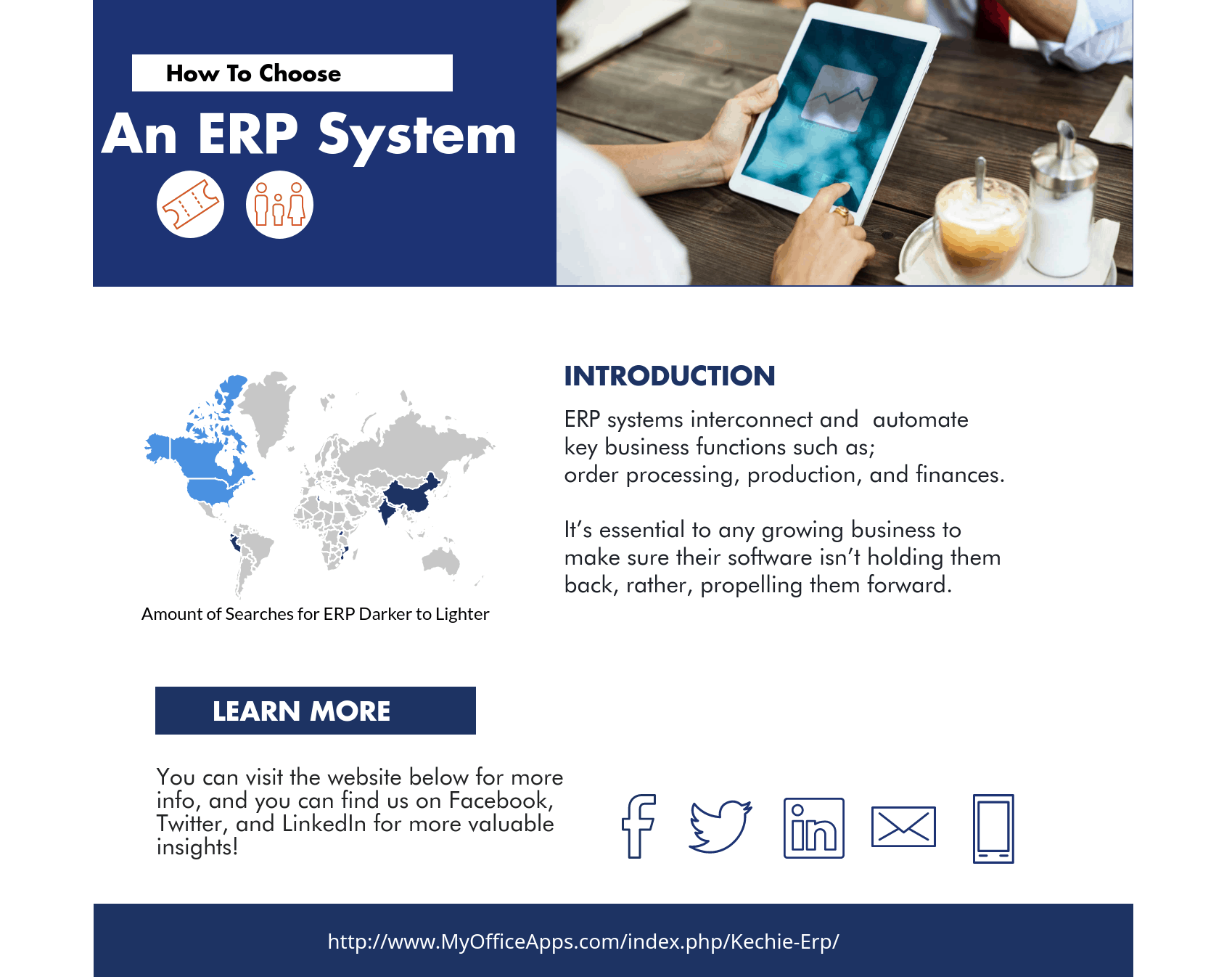
What Should You Look for When Choosing an ERP solution?
- Software Compatibility
- Learning Curve
- Functionality
- Overall Cost
- Ease of use
- Deployment Options
- Scalability
- Adaptability
How do you choose the right one?
- Draw up a definite list of requirements
- The key is to map out processes that your ERP should support
- (80% of customers are unhappy with their current ERP)
- Decide on a delivery method
- Cloud ERP vs the outdated, on premise ERP
- (78% of American small businesses will have adopted cloud by 2020)
- Review the Project Budget
- Think about the immediate and long-term financial implications
- (Cloud ERP allows companies to recover costs within 2 years)
- (Kechie ERP has no additional costs apart from monthly license costs)Read about The Important Factors to Look for When Comparing ERP System blog to dive deep.
Efficiency is the most important factor of ERP selection; find an ERP that is cost-effective and will improve your existing processes, (or establish new ones) to select the best ERP solution for your company.
Receive a free demo of the best cloud ERP software with the most cost-effective price with no risk at all!

















